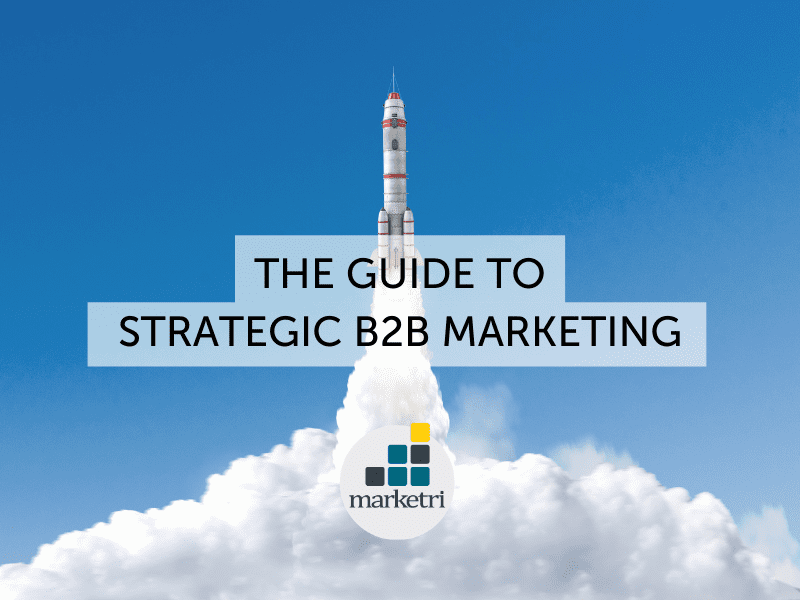What is a Chief Growth Officer (CGO) and Why Does Your Business Need One?
More than half of all businesses cite growth as their top priority, according to a recent Gartner Survey. (Yes, even above profitability.) And they’re adding a new C-level executive to drive it: the Chief Growth Officer (CGO).
We define this relatively new job role, why your business needs this strategic growth catalyst, and what the CGOs of today and tomorrow will enable growth-minded companies to achieve.
Defining the Chief Growth Officer
In simple terms, a CGO is a senior executive responsible for driving organizational growth. Unlike most C-suite leaders, the CGO has cross-functional responsibility that spans many departments and operating groups. They also have a broader mandate than roles like the CFO or CMO—understandably, since growth requires many functions working toward the same goal.
Businesses typically task the CGO with getting sales, marketing, product, operations, customer success, and even data analytics fully aligned toward achieving ambitious revenue targets. The Chief Growth Officer unifies these functions in a way that traditional C-suite leaders cannot, developing and overseeing the execution of enterprise-level strategies that drive and support sustainable growth.
Think of the CGO as your growth champion and catalyst, with the responsibility and authority to work horizontally across all the functions that contribute to long-term growth. They have a hand in everything from strategic planning to product innovation, digital transformation, market analysis, revenue operations, partnership and alliance formation, customer satisfaction, and more.
Why Does Your Business Need a CGO?
The CGO role emerged from a startling realization: In most companies, there is no single leader fully responsible for growth. Even now, a decade after the term CGO first entered the scene, only about 14 percent of organizations have added one to their executive team.
But do a search for “CGO” and you’ll find that attention to this emerging role has skyrocketed among businesses of all sizes and types. Google search trends showed zero interest in the term up until around 2015…then a near-hockey stick rise.

Why this surge in focus? A few converging trends have turned the CGO into a must-have for growth-minded businesses with ambitious revenue goals.
Traditional Silos Prevent Growth
Most businesses suffer from siloed structures that keep different functions from working in sync. Or worse, create a culture of blame and bottlenecks. A CGO is responsible and accountable to break down those silos and get every department that contributes to growth aligned toward shared goals. They develop strategies that unify groups, create processes that improve collaboration, and establish the infrastructure to do it all efficiently.
Data is the New Currency in Decision-Making
In a fast-changing, volatile world, no business can afford decision missteps that jeopardize growth. But you can’t make timely, informed decisions unless you can access and analyze a broad set of internal and external data. The CGO is in a position to apply sophisticated data analytics to guide growth investments, establish priorities at the organizational level, and identify high-potential opportunities. And they can do it proactively, keeping ahead of market trends and the competition while staying in sync with evolving customer needs.
Daily Operations Often Overshadow Long-Term Strategy
When change is constant and new competitors constantly emerge, even senior leaders can find themselves mired in day-to-day issues. Adding a CGO to the C-suite ensures someone is laser-focused on driving long-term growth—no matter what each day brings.
The B2B Customer Experience Has Forever Changed
Your prospects (not your sales team) control the buying process. They’re using AI-powered search tools and digital channels to find companies that solve their business challenges. So when it comes to attracting the ideal buyers, converting them to customers, cementing their long-term loyalty and profitability, and continually innovating to stay relevant—it’s a whole different ballgame. The CGO unifies all the functions that create the sum total of the customer experience, driving new sales, building loyalty, and reducing customer acquisition costs (CAC).
Agility is Not Optional
Your B2B company can’t survive, let alone grow, unless you have the nimbleness to respond to evolving conditions and the foresight to stay ahead of rapid change. But agility demands visibility—something the CGO can provide. They track market trends, assess the voice of the customer, and get everyone aligned to do what it takes to stay competitive: whether that’s diversifying your product line, expanding into new markets, or tapping new partners.
The Fractional CGO: How Middle Market Companies Add This Role Affordably
A CGO can help any growth-minded business achieve its goals—particularly tech companies and digital-first businesses with aggressive targets. But only the largest enterprises need (and can afford) a full-time CGO on staff.
For middle market companies, the better approach is to hire a CGO on a fractional basis.
A Fractional CGO gives your business access to a flexible, scalable leader who is accountable to achieve specific growth milestones. Rather than tie up overhead on a C-suite leader you don’t need full-time, the fractional model allows you to get just the right slice of an experienced growth strategist’s time and expertise.
You’ll avoid tying up budget unnecessarily on salaries, leaving more for growth strategy execution. And you’ll find it much easier to hire a talented Fractional CGO than to recruit and retain the role on staff—especially considering all the hats this leader wears: part visionary, strategist, innovator, process improver, bridge builder, orchestrator, and data analyst. These unicorns are hard to find and even harder to keep.
What’s Next for Your CGO?
The CGO role continues to evolve in sync with a changing business landscape. We’re already seeing companies replace their Head of Sales or Chief Revenue Officer (another relatively new role) with a CGO. There was once talk that the CGO might replace the CMO—but those roles remain distinct and equally critical to long-term success.
And though the Chief Growth Officer position is still in its infancy, don’t be surprised if the most effective CGOs become the heir apparent to the CEO—leveraging their cross-functional responsibility and enterprise-level visibility to take on the top spot.
We’ll also see CGOs evaluated on a broader set of performance metrics than pure revenue growth. While a burgeoning pipeline and faster new logo acquisition will remain mandatory goals, companies will increasingly consider post-sale metrics when measuring the CGO’s performance. Think: net promoter score, contract renewals, revenue retention, cross-sales, upsells, and churn rate. By holding the CGO accountable for growth across the entire customer lifecycle, businesses will get more ROI out of this critical role.
As AI keeps advancing at breakneck speed, expect tomorrow’s CGOs to manage hybrid teams that combine talented humans with AI-powered tools and AI agents, all working seamlessly to drive growth. It’s a challenging undertaking. But it’s a must in a world where businesses that don’t leverage the power of AI will fall woefully behind.
If your company’s growth goals are consistently out of reach, don’t lower the bar; change your approach. Hiring a Fractional CGO could be just the way to amplify your revenue, build greater customer loyalty, and hit aggressive growth targets.
Schedule a consultation with Marketri to learn how our Fractional CGO services can propel your business forward. And if you’re wondering how a CGO differs from a Chief Marketing Officer—and whether you need one or both—check out this blog for insights!

This blog was originally published July 16, 2015





